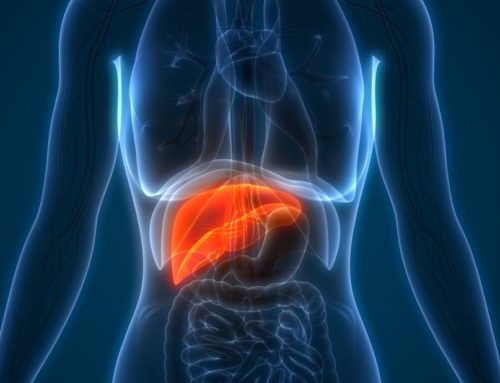What are opioids?
Opioids are a type of medication that relieves pain. They also release chemicals in the brain that have a calming effect. Doctors may prescribe opioids for people who have had surgery, dental work, or an injury. Prescribed opioids include oxycodone, hydromorphone, hydrocodone, fentanyl, and codeine. Heroin is an illegal opioid drug. Fentanyl also can be made illegally.
What is opioid use disorder?
Opioid use disorder is a treatable disease that can be caused by frequent opioid use. It is sometimes called opioid addiction. Symptoms of opioid use disorder include:
– feeling a strong desire for opioids.
– feeling unable to stop or reduce opioid use having work, school, or family problems caused by your opioid use
needing more opioids to get the same effect
– spending a lot of time trying to find and use opioids
– feeling unwell after stopping or reducing use
How can taking a prescription opioid become an opioid use disorder?
Most people who use a prescription opioid have no trouble stopping their use, but some people develop an opioid use disorder. Repeated opioid use can cause changes in your brain that make it hard to stop using opioids. Some people are more likely to have these brain changes than others. Your risk can vary based on your genes, environment, and age.
People who have an opioid use disorder may look for other ways to get opioids when their prescription runs out. They may go from doctor to doctor to ask for new prescriptions. Some people use the illegal drug market to find opioids.
What are the risks of opioid use disorder during pregnancy?
Pregnant women with opioid use disorder have an increased risk of serious complications, including the following:
– Placental abruption
– Fetal growth problems
– Preterm birth
– Stillbirth
– When you have an opioid use disorder during pregnancy, you may not take care of yourself before and after the baby is born. You may miss prenatal care appointments.
Anyone with opioid use disorder is at risk of overdose. If you take too much of the drug, you can pass out. Your breathing may slow down or stop, and you can die.
How does opioid use during pregnancy affect a newborn?
A baby born to a woman who used opioids during pregnancy is no longer getting the drug after delivery. As a result, the baby may have temporary withdrawal symptoms. This is called neonatal abstinence syndrome (NAS). Symptoms of NAS can include the following:
– Shaking and tremors
– Poor feeding or sucking
– Crying
– Fever
– Diarrhea
– Vomiting
– Sleep problems
– Swaddling, breastfeeding, skin-to-skin contact, and sometimes medications can help babies with NAS feel better.
– NAS usually lasts days or weeks. There are no known lasting physical or intellectual problems for babies born with NAS.
How is opioid use disorder treated during pregnancy?
The best treatment for opioid use disorder during pregnancy includes opioid replacement medication, behavioral therapy, and counseling. The medications that are given are long-acting opioids. This means that they stay active in the body for a long time. These opioids, called methadone and buprenorphine, reduce cravings but do not cause the good feelings that other opioids cause. Behavioral therapy and counseling help people avoid and cope with situations that might lead to relapse.
How is opioid replacement medication given during pregnancy?
Methadone is given by health care professionals in special clinics. Buprenorphine may be available from any doctor who has had special training, including some primary care doctors, ob-gyns, or mental health physicians.
You will be monitored throughout your treatment to make sure the dosage is right. If you have withdrawal symptoms, your dosage may need to be changed. Do not take more medication than is prescribed for you.
What are the benefits of treatment?
In the right amount, both methadone and buprenorphine prevent withdrawal, reduce cravings, and block the effects of other opioids. Treatment with either medication makes it more likely that your fetus will grow normally and not be born too early. During treatment, you also will receive counseling, support, and prenatal care. These services can help you have a healthier pregnancy and start you on the road to recovery.
What are the risks of treatment?
Babies born to women taking methadone or buprenorphine can have temporary withdrawal symptoms. Not all babies will go through withdrawal. Swaddling, breastfeeding, skin-to-skin contact, and sometimes medications can be used to make babies feel better. If a baby is treated with medications, the dosage will be decreased over time until the symptoms have stopped. Your baby may need to stay in a neonatal intensive care unit (NICU) after birth.
Does opioid replacement medication cause birth defects?
Based on many years of research, opioid replacement medication has not been found to cause birth defects.
Can I breastfeed while taking opioid replacement medication?
Breastfeeding usually is encouraged for women who are taking methadone or buprenorphine. Women who should not breastfeed include those who:
– take certain medicines that are not safe during breastfeeding actively use street drugs
– have human immunodeficiency virus (HIV)
What if I am prescribed opioids for pain relief during pregnancy?
If you are prescribed an opioid during pregnancy, you and your health care professional should discuss the risks and benefits of this treatment. When taken under a doctor’s care, opioids can be safe for you and your fetus, but they still may cause NAS. It is important to take the medication only as prescribed. Continue to see your obstetrician–gynecologist (ob-gyn) or other health care professional throughout pregnancy. Your health and your fetus’s health should be monitored.
What else should I know about opioid use disorder during pregnancy?
When you are pregnant and have an opioid use disorder, you should not stop using the drug without medical supervision. Quitting without a doctor’s help, especially when done suddenly, often leads to relapse (return to drug use). Relapse can be harmful for you and your fetus.
Naloxone is a drug that can save your life if you overdose. You can get naloxone over the counter in some states. You should always have a supply of naloxone with you if you have an opioid use disorder or if you have friends or family with this disorder. Naloxone may cause fetal stress when given to a pregnant woman, but it should still be used to save the woman’s life.
How can I get help?
If you need help with an opioid use disorder, you can find resources on the website of the Substance Abuse and Mental Health Services Administration (SAMHSA): www.samhsa.gov. SAMHSA also has a 24-hour treatment referral line: 800-662-HELP (4357).
I have a problem with opioids and I’m afraid to ask for help. What should I know?
Telling a health care professional about how you use opioids is important, especially when you are pregnant. If you have opioid use disorder, treatment can start you on the road to recovery and a healthier pregnancy. Remember, opioid use disorder is a treatable disease.
It also is important to know that states have different laws and policies. Some states consider opioid use during pregnancy a form of child abuse or neglect. Some states have created treatment programs specifically for pregnant women. Other states have policies that give pregnant women priority in general treatment programs. It may be helpful to learn about your state’s laws and policies. You can visit this site for more information: www.guttmacher.org/state-policy/explore/substance-use-during-pregnancy.
The American College of Obstetricians and Gynecologists believes that pregnant women who have an opioid use disorder should receive medical care and counseling services, not punishment. Seeking help is the first step in recovering from addiction and making a better life for you and your family.
Source: ACOG





